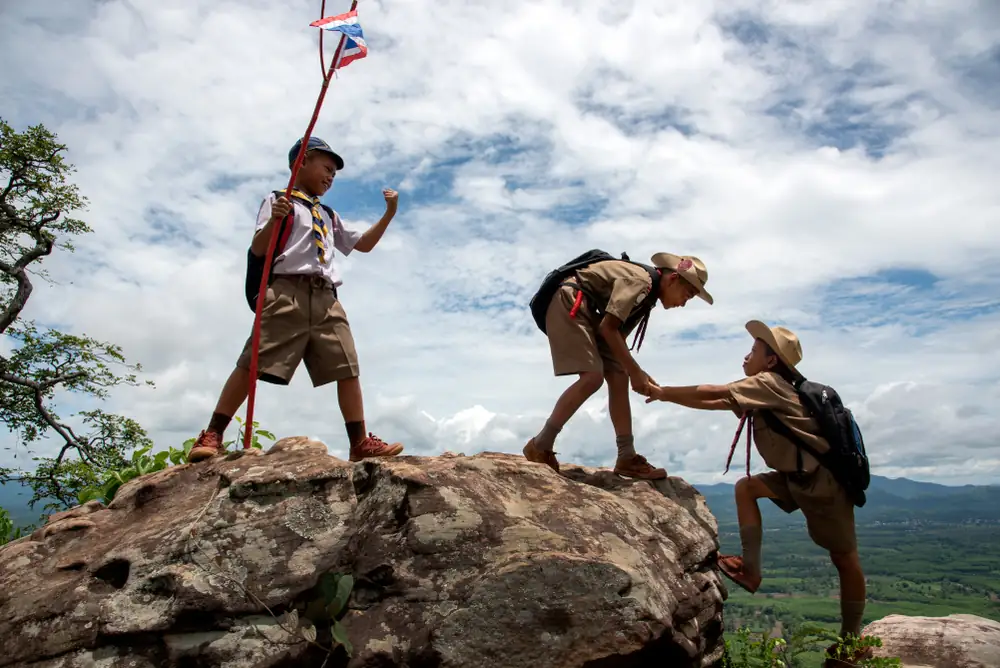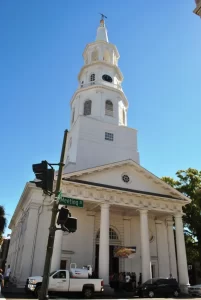[Editor’s note: This article is adapted for SurvivorsRights.com from an essay by Kurt Meyer, who has a Substack newsletter, Showing Up. Meyer’s essay was reprinted in the Iowa politics newsletter, Bleeding Heartland.]
A Legacy Tarnished by Secrecy and Abuse
Once celebrated as a cornerstone of American youth development, the Boy Scouts of America (BSA) now finds itself synonymous with one of the largest child sexual abuse scandals in U.S. history. While President Franklin D. Roosevelt praised the Scouts in 1935 for building character and citizenship, the organization’s own leaders were already tracking known abusers in secret “red flag files,” later known as the “perversion files.”
At the Scouts’ 25th anniversary meeting in 1935, Colonel Theodore Roosevelt Jr. publicly acknowledged the existence of these files, created to identify volunteers unfit to work with youth. But for decades, this internal database remained largely unknown to the public.
By 2020, more than 82,000 survivors had filed sexual abuse claims, prompting BSA to declare bankruptcy. Today, the organization has rebranded as Scouting America, but its new identity has not erased the traumas of the past, nor has it resolved the complex web of financial, legal, and moral obligations owed to survivors.
Seven Key Findings from the Scouting Abuse Crisis
1. Decades of Secrecy Delayed Justice
Information about widespread abuse within BSA remained hidden until the 1990s. Journalist Patrick Boyle’s 1994 book Scout’s Honor and a 2012 court ruling in Oregon helped reveal the scope of abuse by forcing the release of internal files.
2. The Organization Prioritized Its Reputation Over Child Safety
Like many institutions facing abuse allegations, BSA initially denied the problem, minimized its scope, and shielded itself with the narrative of its good works.
3. A Repeated Pattern of Grooming and Relocation
Many abuse cases followed a disturbing cycle: leaders would first befriend boys, then mentor them, and eventually assault them. When discovered, abusers were often transferred to other troops, perpetuating the cycle.
4. Abusers Often Masked Harm Behind Charisma
Molesters often gained trust by appearing to relate to youth better than their own parents, offering attention, empathy, and support that masked their harmful intent.
5. Sexual Orientation Is Not a Predictor of Abuse
There is little correlation between homosexuality and child molestation. Abuse is about power and access, not orientation. Most child abusers identify as heterosexual.
6. Membership Decline Follows Institutional Failures
Scout enrollment has plummeted from a 1970s peak of 4 million to fewer than 1 million in 2024. Reasons include shifting family priorities, the withdrawal of major sponsors like the Mormon Church (which has been plagued by its own sexual abuse scandal), and public loss of trust due to the abuse crisis.
7. Compensation Efforts Fall Short of True Accountability
A $2.46 billion Settlement Trust was created to compensate survivors, but by mid-2025, only $138 million had been distributed to 20,000 survivors. More than 7,000 claimants accepted a one-time “quick pay” of $3,500. The full scope of damages is estimated to exceed $7 billion.
A Systemic Scandal With No End in Sight
The legal battle is far from over. With over 200 local councils, more than 100 insurers, and thousands of chartering organizations implicated, litigation could stretch into the next decade. Disputes over insurer responsibility continue to delay payments, even as the trust bills insurers for an additional $7 billion.
The Boy Scouts crisis is a stark reminder of a broader, often-overlooked public health emergency. Research from the nonprofit 1in6 estimates that 1 in 6 men in the U.S. experience sexual abuse before age 18. However, due to stigma, many delay disclosure for decades, often until their 40s or 50s.
According to RAINN, survivors of sexual abuse are:
- 3x more likely to suffer from depression
- 4x more likely to contemplate suicide
- 6x more likely to have PTSD
- 13x more likely to abuse alcohol
- 26x more likely to abuse drugs
The long-term trauma of abuse leaves many survivors carrying deep emotional scars well into adulthood.
Institutional Reform or Just Rebranding?
Now operating under the name Scouting America, the organization claims it is evolving to meet modern needs, citing inclusivity, STEM education, and environmental stewardship. But survivors and advocates remain skeptical.
While the Scouts have launched new youth protection policies, critics argue the same structural flaws that enabled abuse still exist. One observer noted that the organization treated its abuse problem like a “product defect,” denying it rather than dismantling systems that allowed it to flourish.
What Comes Next?
Whether Scouting America can earn back public trust remains uncertain. Survivors continue to wait for compensation, accountability, transparency, and reform. As one editorialist put it:
“Fond memories can get mixed up with dark questions and horrible truths. I learned that it’s easy to be angry. It is harder to be both angry and grateful.”
For many survivors, the hope is not just for restitution, but for a future in which no child suffers in silence, and no institution escapes scrutiny.
Learn More or Seek Help
If you are a survivor of sexual abuse in the Scouts or another institution, you are not alone. Get the process started to see if you may qualify for compensation by filling out the form below.




